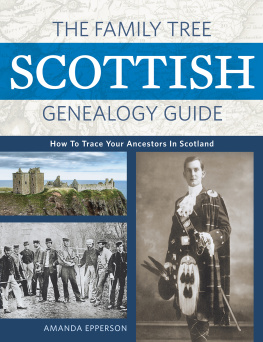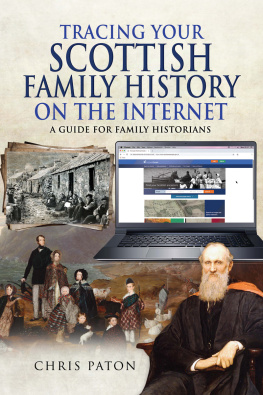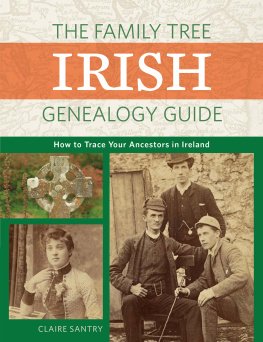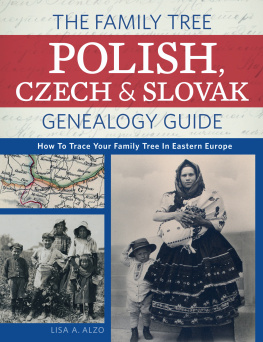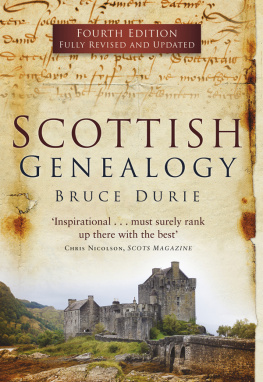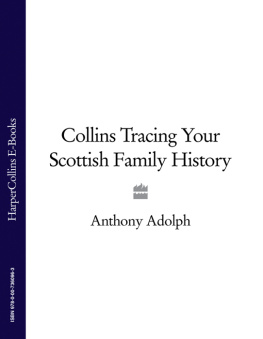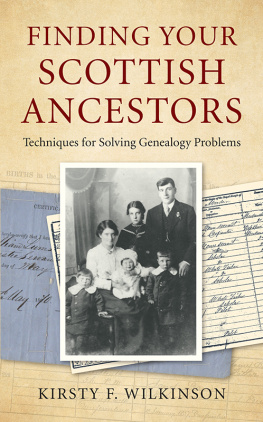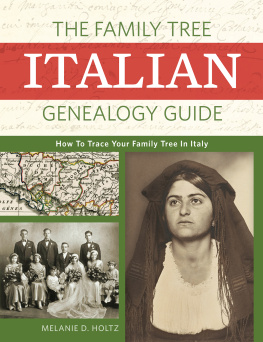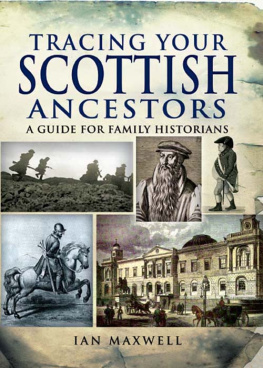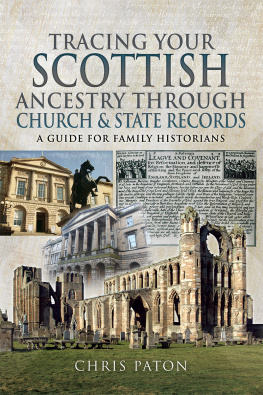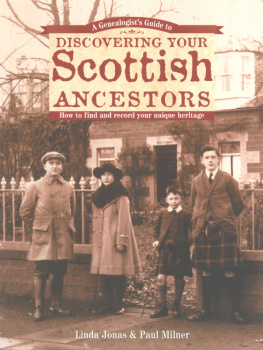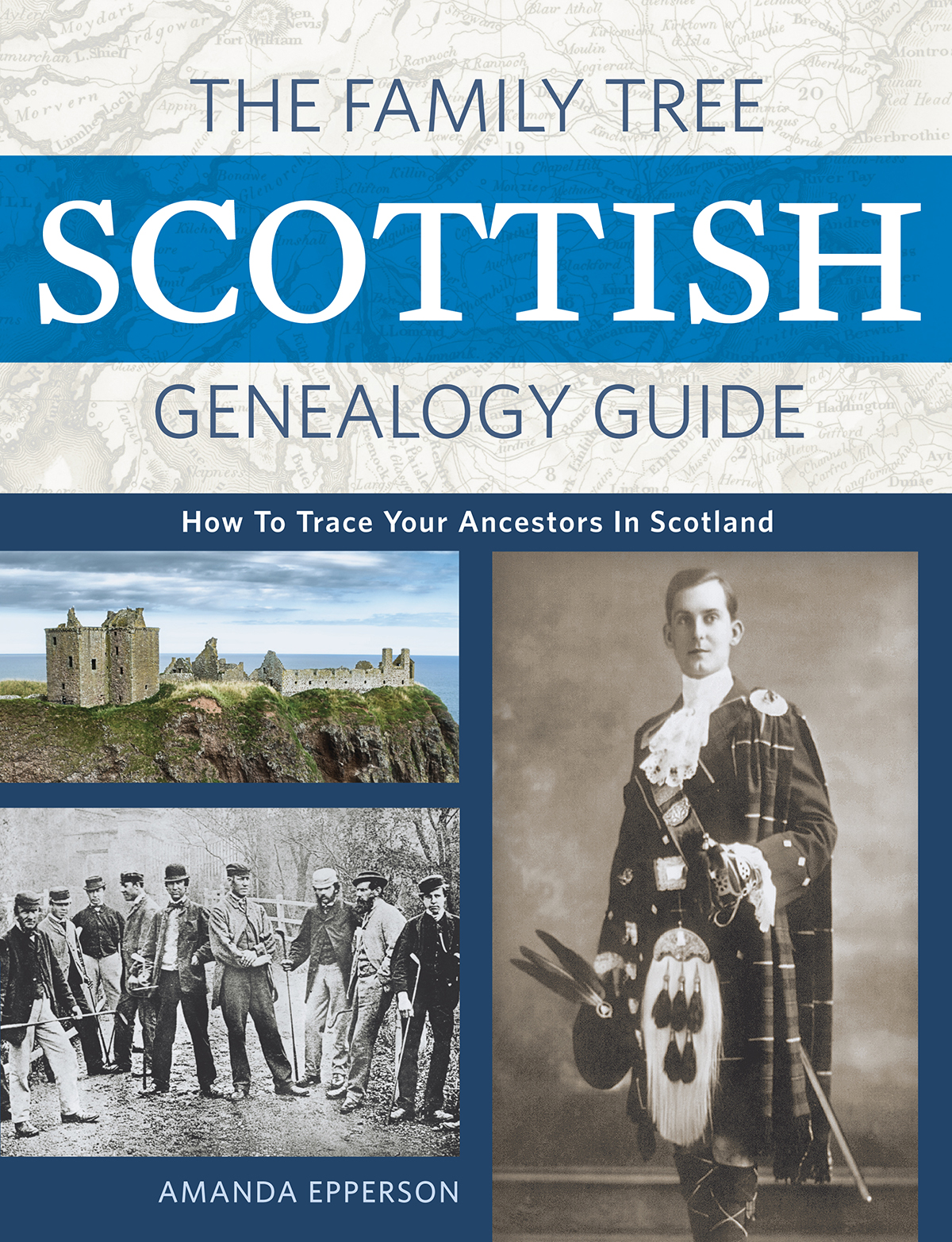Contents
Guide
THE FAMILY TREE
SCOTTISH
GENEALOGY GUIDE
How to Trace Your Family Tree in Scotland
AMANDA EPPERSON

CINCINNATI, OHIO
familytreemagazine.com/store
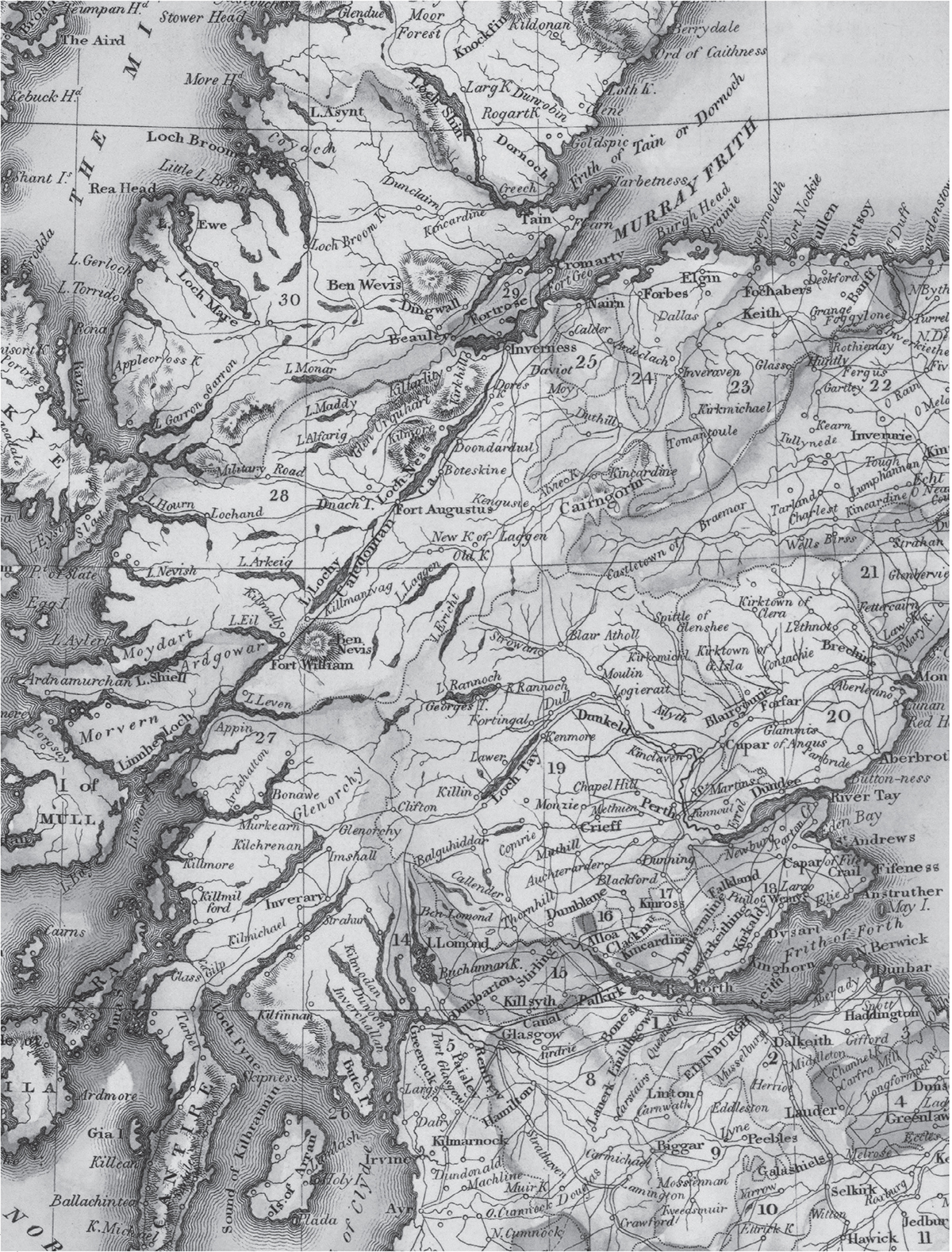
Contents
Learn more about your heritage with this history of the Scottish in America: Scottish cuisine and celebrations, famous Scottish Americans, and the all-important tartan.
Set yourself up for research success. This chapter will help you start your genealogy research, with expert first steps, genealogy best practices, and important research principles.
Discover the ancestors who braved the New World with this chapters guides to finding your ancestors name, immigration date, and place of origin in US records like census records, passenger lists, and more.
Delve into your homelands storied past with this quick guide to Scottish history (and how it affects your research), from the Picts to William Wallace to today.
Step back in time to visit your ancestors lands. This chapter discusses Scottish administrative divisions, plus how to use resources like OS maps, gazetteers, and atlases.
Track your ancestors in records databases with this chapters tips for understanding Scottish given names, surnames, and naming conventions.
Locate your ancestors in the official records of the old country. This chapter discusses Scotlands civil registration system and how to find civil records on FamilySearch.org and ScotlandsPeople.
Explore the faith lives of your ancestors with this chapters guide to the Old Parish Registers created by the Church of Scotland, kirk session records, and vital records created by other religious institutions.
Find your ancestors hiding in Scottish census records with this guide to finding and using censuses and census substitutes.
Unearth your ancestors and the places they called home. This chapter explains how to use wills, property records, and sasines.
Investigate your ancestors day-to-day life with occupational records that document their ministry, military service, or work as a tradesman.
Search far and wide for your ancestors in records that dont fit into a single category, such as published family histories, newspapers, legal records (called deeds), tombstones, and more.
Witness this books techniques in action with these two case studies from real-life research.
Blast down your brick walls with this chapters techniques for overcoming research dead-ends.
DEDICATION
To my grandfather, William Keir Hood, who is the reason I became interested in Scotland.
To my parents, Joseph and Patricia Epperson, who are the reason I am interested in anything at all.
Introduction
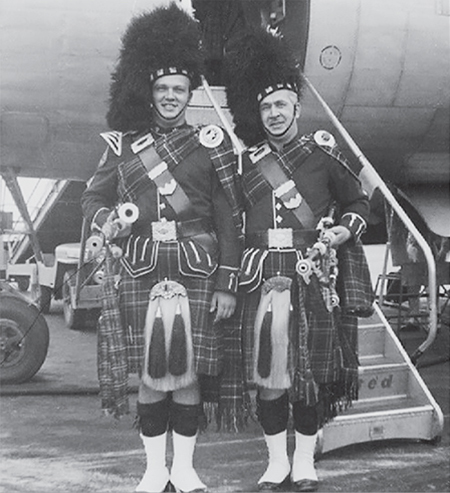
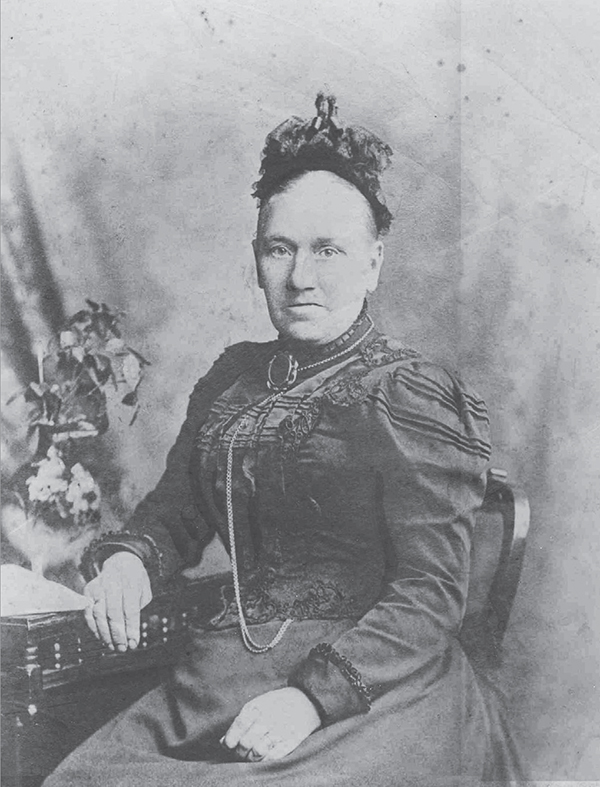

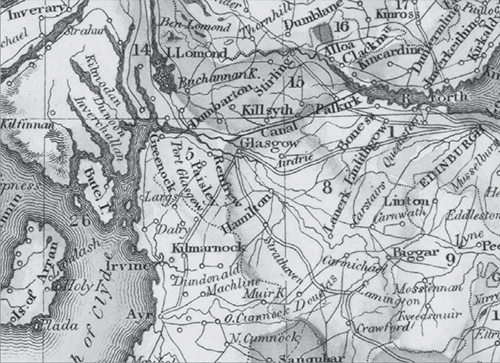
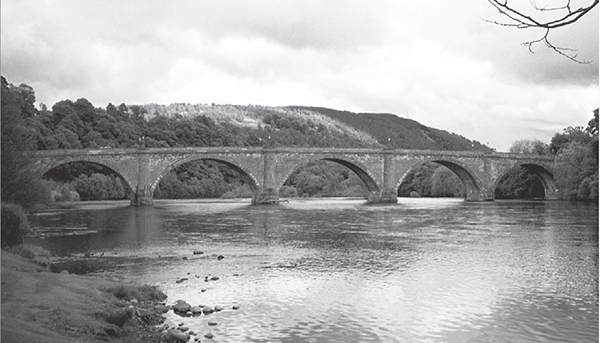
I know who my Scottish immigrant ancestors are. Do you?
A clarification: I know who they are on my mothers side. They came to America in the 1920s and are all easily traced in US and Scottish recordsat least to the early nineteenth century. But the Scottish ancestors on my fathers side are an entirely different story. In fact, I dont even know if I have any. However, his DNA results (and the fact that his earliest ancestors were in the American colonies before 1700) strongly suggest that Scots are in my paternal line somewhere. However, they will be much more difficult to trace.
Whether your Scottish ancestor came to America yesterday or in 1714, you will need to develop skills to trace immigrant ancestors through time and confirm their identity in both countries. This can be a daunting task, especially if you seek a colonial immigrant.
Luckily, we are living in a golden age of genealogy, with more and more sources coming available online every day. And with many of them indexed and keyword-searchable, its never been easier to access themalthough I dont think any algorithm will be able to search all at once for the great variety of spellings for surnames like McGillivray and Fenningham.
This book will help you trace your Scottish ancestryno matter when your ancestors arrivedwhether you are a novice or an experienced researcher. Well walk you through the steps of discovering your ancestors homeland in American records and introduce you to Scottish history, migration patterns, and all kinds of records (church, civil, military, and more). In the following pages, you will learn how to access many of these documents online, helping you identify your ancestors and discover the world they lived in.
With diligence and with luck, you too, will be able to say, I know who my Scottish ancestors are and where they came fromor, at least, one of them.
Amanda Epperson, PhD
Cleveland, Ohio
May 2018
PART 1
LINKING YOUR
FAMILY TREE
TO SCOTLAND
Discovering Your Scottish Heritage
Tartan, kilts, bagpipes, and the Loch Ness Monster instantly bring Scotland to mind, whether you have Scottish ancestry or not. You may be aware of your Scottish great-grandfather and are eager to uncover his Scottish origins. Or perhaps you simply feel connected to Scottish music or the sound of Scots Gaelic and are hoping to share a genetic connection with this fabulous country. While the overall numbers of Scots who have immigrated to the United States may be small compared with other ethnic groups, Scottish Americans (including John Witherspoon and Andrew Carnegie) have had an outsized influence on American culture and business. And because Scots immigrated to the United States for more than three hundred years, you may very well have Scottish ancestry hidden somewhere in your family tree ().
This chapter provides a brief introduction to the history of Scottish immigration to the United States. Knowing the circumstances surrounding your ancestors arrival in the United States can provide insight into their lives and reasons for departure. This chapter also features a brief summary of Scottish cultural activities maintained by Scottish Americans, allowing you to experience your heritage and honor your ancestors in new ways.

My grandfather, William Keir Hood, prepares to play the bagpipes at an event in Cleveland, Ohio.
IMMIGRATION TO THE UNITED STATES
Scots have been coming to America since Colonial times, and many Scottish immigrants have played an integral role in American history. Here, well outline some of the broad trends in Scottish immigration to the United States. See for more on Scottish history.

